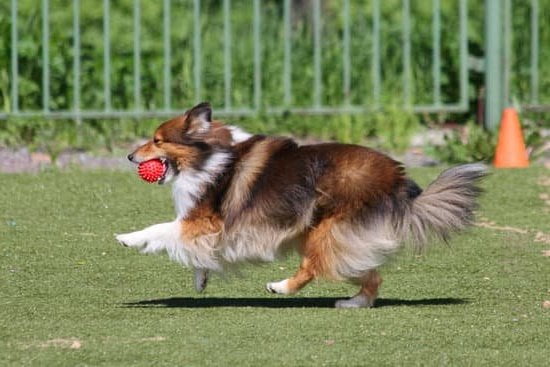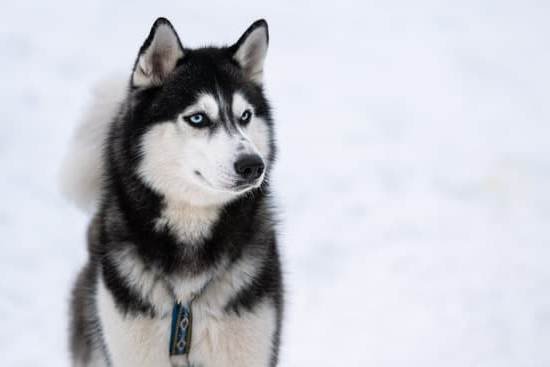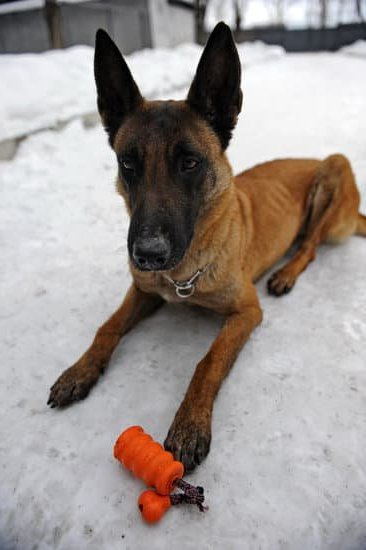How do you potty train dogs? Potty training is a crucial aspect of raising a well-behaved and obedient dog. It not only helps in maintaining cleanliness within the home but also ensures that your furry friend is comfortable and at ease. Potty training involves teaching your dog where and when to do their business, which requires patience, consistency, and positive reinforcement.
Choosing the right potty training method for your dog is essential in ensuring successful training. Whether it’s crate training, paper training, or using a designated outdoor spot, understanding your dog’s preferences and behavior can help determine the most effective approach. Additionally, establishing a consistent potty training schedule and setting up a designated potty area are equally important factors in the process.
Positive reinforcement plays a significant role in shaping your dog’s behavior during potty training. Using rewards such as treats or praises can motivate them to continue exhibiting appropriate bathroom habits. However, dealing with accidents and setbacks is also inevitable during the potty training process. Understanding how to handle these situations with patience and resilience is key to successful potty training for dogs.
Choosing the Right Potty Training Method for Your Dog
Potty training is an essential part of a dog’s upbringing, and it requires patience, consistency, and the right method to be successful. There are several potty training methods you can use to train your dog, and each method has its own pros and cons. It’s important to choose the right method that suits your dog’s personality and your lifestyle. Here are some popular potty training methods for dogs:
1. Crate Training: This method involves using a crate or a confined space to limit your dog’s access to the living area and encourage them to hold their bladder until they are taken outside.
2. Paper Training: With this method, you designate a specific area indoors where your dog can eliminate on newspaper or puppy pads. Over time, you gradually move the pads closer to the door and eventually outside.
3. Bell Training: This method involves teaching your dog to ring a bell whenever they need to go outside. You start by associating the sound of the bell with going out for potty breaks.
Choosing the right potty training method for your dog depends on their breed, age, size, and temperament. It’s important to be consistent with whatever method you choose and be patient with your furry friend as they learn.
When deciding on a potty training method, it’s crucial to consider your lifestyle, work schedule, and living situation. Some methods may require more supervision or time investment than others. Also, take into account any physical limitations that may prevent you from being able to take your dog outside frequently throughout the day.
In addition what approach might also depend on what type of outdoor access dogs will have at different points in their lives. For example city owners who do not have lawns might not mind paper-trained dogs while owners with yards would prefer their dogs understanding that going inside is not an option.
Remember that every dog is unique in how they respond to different methods so be open minded about switching if one doesn’t seem effective with yours based on their signals when choosing between these different methods for how do you potty train dogs.
Setting Up a Designated Potty Area for Your Dog
When it comes to potty training your dog, setting up a designated potty area is an essential step in the process. This not only helps to create a routine and consistency for your dog, but it also prevents accidents from happening in unwanted areas of your home. Here are some tips for setting up a designated potty area for your dog:
- Choose a specific spot in your yard or outdoor area where you want your dog to go potty. This could be a patch of grass, gravel, or even a designated pee pad area.
- Make sure the designated potty area is easily accessible to your dog at all times. This will encourage them to use the area when they need to go.
- Use scent markers such as fake grass or pee pads with attractant scents to encourage your dog to use the designated potty area.
Additionally, if you live in an apartment or urban area and need to train your dog to go potty indoors, you can create a designated indoor potty area using similar methods. This could be a pee pad or artificial grass with attractant scents placed in a specific location within your home.
Ultimately, the key to success in setting up a designated potty area for your dog is consistency and patience. By consistently directing and encouraging your dog to use the designated spot and providing positive reinforcement when they do so successfully, you can effectively teach them where it’s appropriate to go potty.
Establishing a Consistent Potty Training Schedule
One of the most crucial aspects of potty training your dog is establishing a consistent schedule. Dogs thrive on routine, so having a regular schedule for potty breaks is essential for their success in learning where and when to go. But how do you potty train dogs with a consistent schedule?
First and foremost, consistency is key. Take your dog outside to their designated potty area at the same times every day, such as first thing in the morning, after meals, before bed, and so on. This will help them understand when they are expected to eliminate.
It’s also important to supervise your dog during their potty breaks, especially in the early stages of training. This will not only allow you to praise and reward them immediately after they eliminate in the desired spot but also prevent accidents indoors. Remember that young puppies may need more frequent potty breaks, as they have smaller bladders and faster metabolisms. By following a consistent schedule and being patient with your dog, you can effectively potty train them.
Using Positive Reinforcement and Rewards During Potty Training
Using positive reinforcement and rewards is an essential part of effectively potty training your dog. This method involves rewarding your dog with treats, praise, or playtime every time they successfully use their designated potty area. Positive reinforcement helps to create a positive association with going potty in the right place, making them more likely to repeat the behavior in the future.
When using positive reinforcement during potty training, it’s important to choose treats that your dog loves and responds well to. Small, soft treats that can be easily and quickly consumed work best for this purpose. It’s also crucial to give the reward immediately after your dog has finished eliminating in the designated area, as dogs make associations between behavior and consequence quickly.
In addition to treats, verbal praise and enthusiastic petting can also serve as effective rewards during the potty training process. Your tone of voice and body language should convey positivity and encouragement when your dog successfully goes potty in the right place. This will help reinforce the desired behavior and motivate your dog to continue using their designated potty area.
| Positive Reinforcement Method | Key Points |
|---|---|
| Treats | Choose small, soft treats that your dog loves; reward immediately after successful elimination |
| Verbal Praise | Use enthusiastic tone of voice and body language to convey positivity; provide immediate praise after successful potty breaks |
| Playtime | Allow your dog to have some fun or playtime as a reward for using the designated potty area correctly |
Dealing With Accidents and Setbacks During Potty Training
Remaining Patient and Persistent
Accidents are an inevitable part of the potty training process, especially when you are dealing with a young or inexperienced dog. It is crucial to remain patient and persistent throughout this stage of training. Repetition and consistency are key elements in reinforcing the desired behavior, so it’s important not to get discouraged by setbacks.
Cleaning Accidents Properly
When accidents do occur, it’s essential to clean them up properly to eliminate any lingering odors that may attract your dog back to the same spot. Use a pet-friendly enzymatic cleaner to thoroughly clean the area and remove any traces of urine or feces. This will help prevent your dog from associating that area with a potty spot.
Rewards for Improvement
If you notice your dog making progress but still experiencing occasional accidents, continue to use positive reinforcement and rewards to encourage good behavior. Give plenty of praise and treats when your dog goes potty in the designated area, even if there have been some setbacks along the way.
Navigating through accidents and setbacks during potty training can be challenging, but by remaining patient, cleaning up accidents properly, and continuing to use positive reinforcement, you can help your dog learn where they should go potty. Remember that each dog is unique, so it may take some time before they fully grasp the concept of potty training.
Tips for Successful Potty Training in Different Seasons and Weather Conditions
Potty training a dog can be challenging, especially when dealing with different seasons and weather conditions. However, with the right approach and some useful tips, you can successfully potty train your furry friend regardless of the weather. Here are some tips to help you navigate through the different seasons and weather conditions.
Firstly, it’s essential to be patient and understanding during the potty training process. Dogs may take longer to go potty in extreme weather conditions such as heavy rain or snow. Be prepared to spend more time outside with your dog during these times, offering encouragement and waiting for them to feel comfortable enough to do their business.
Secondly, consider using indoor potty training solutions for extreme weather situations. Indoor grass patches or training pads can provide a convenient alternative for your dog when going outside is simply not feasible. These indoor options can be particularly useful during cold winter months or in areas with frequent rainfall.
Lastly, pay attention to your dog’s behavior and body language in different weather conditions. Some dogs may have a harder time signaling that they need to go potty in extreme heat or cold. Take the time to understand how your dog communicates their needs and be proactive in taking them out at regular intervals, especially during unpredictable weather.
| Tips for Successful Potty Training | Seasons/Weather Conditions |
|---|---|
| Be patient and understanding | Extreme weather (rain/snow) |
| Consider indoor potty solutions | Cold winters/frequent rainfall |
| Observe dog’s behavior and body language | Extreme heat/unpredictable weather |
Understanding the Signs That Your Dog Needs to Go Potty
It’s important to pay attention to your dog’s behavior and body language in order to pick up on these cues. Additionally, understanding your dog’s individual patterns and habits can also be helpful in determining when they may need to go outside. By being proactive and attentive to these signs, you can minimize accidents and encourage good potty habits in your dog.
In addition to physical signs, it’s also important to recognize any behavioral changes that may indicate a need to go potty. For example, if your dog starts pacing or seems anxious, they may be signaling that they need to relieve themselves. Learning how to interpret these signals will enable you to better anticipate when your dog needs to go potty and take them outside at the appropriate times.
By being aware of these signs and signals, you can communicate effectively with your dog during the potty training process and set them up for success. Understanding their cues will allow you to respond promptly and consistently, ultimately leading to a smoother and more effective potty training experience for both you and your furry friend.
Common Mistakes to Avoid During the Potty Training Process
In conclusion, potty training your dog is an essential part of responsible pet ownership. By understanding the importance of potty training and learning how to do so effectively, you can ensure a happy and healthy environment for both you and your furry friend. Choosing the right method, setting up a designated area, establishing a consistent schedule, using positive reinforcement, and understanding your dog’s needs are all crucial steps in the potty training process.
It’s important to remain patient and consistent throughout the training process as accidents and setbacks are common. Using positive reinforcement and rewards can help reinforce good behavior and encourage your dog to continue with their potty training. Additionally, being attentive to your dog’s behavior and understanding the signs that they need to go potty can also aid in successful training.
By avoiding common mistakes such as punishing your dog for accidents or not being consistent with their schedule, you can set your pet up for success in their potty training journey. It’s also helpful to seek advice from professionals or experienced pet owners if you encounter any challenges along the way. Overall, with dedication and perseverance, it is possible to successfully potty train your dog regardless of the season or weather conditions they may face.
Frequently Asked Questions
How Long Does It Take to Potty Train a Dog?
The time it takes to potty train a dog varies depending on factors such as the dog’s age, breed, and individual personality. Generally, it can take anywhere from a few weeks to several months. Consistency and positive reinforcement are key.
How Do You Stop a Dog From Peeing and Pooping in the House?
To stop a dog from peeing and pooping in the house, it’s important to establish a consistent potty routine, take the dog outside frequently, especially after meals and naps, and praise them when they go in the right place. Accidents should be cleaned up without scolding the dog.
Are Dogs Easy to Potty Train?
Potty training a dog may not be easy for everyone, but with patience, consistency, and positive reinforcement, most dogs can learn where it’s appropriate to relieve themselves. Some breeds may be easier or more difficult to train than others due to their natural behaviors and instincts.

Welcome to the blog! I am a professional dog trainer and have been working with dogs for many years. In this blog, I will be discussing various topics related to dog training, including tips, tricks, and advice. I hope you find this information helpful and informative. Thanks for reading!





